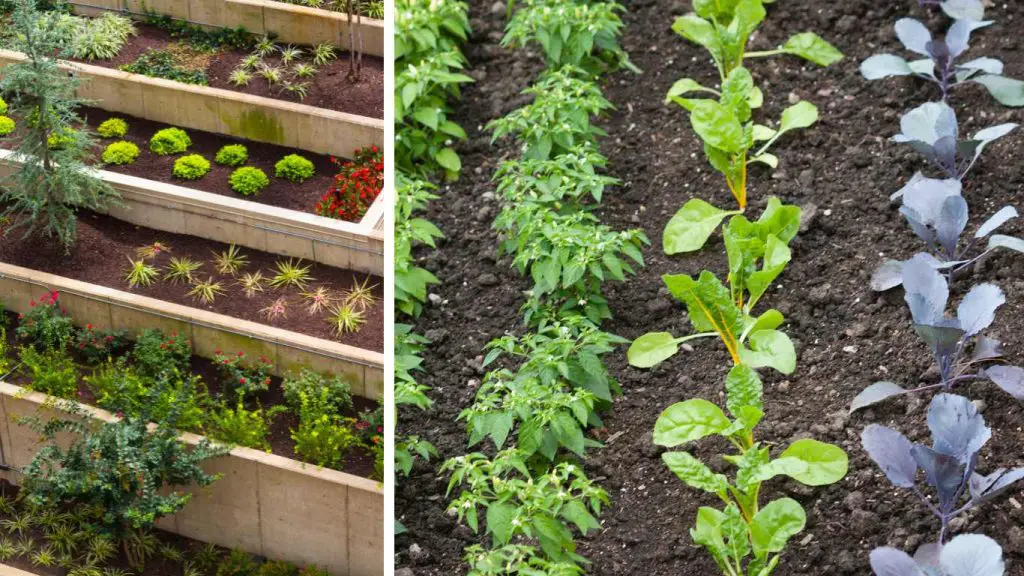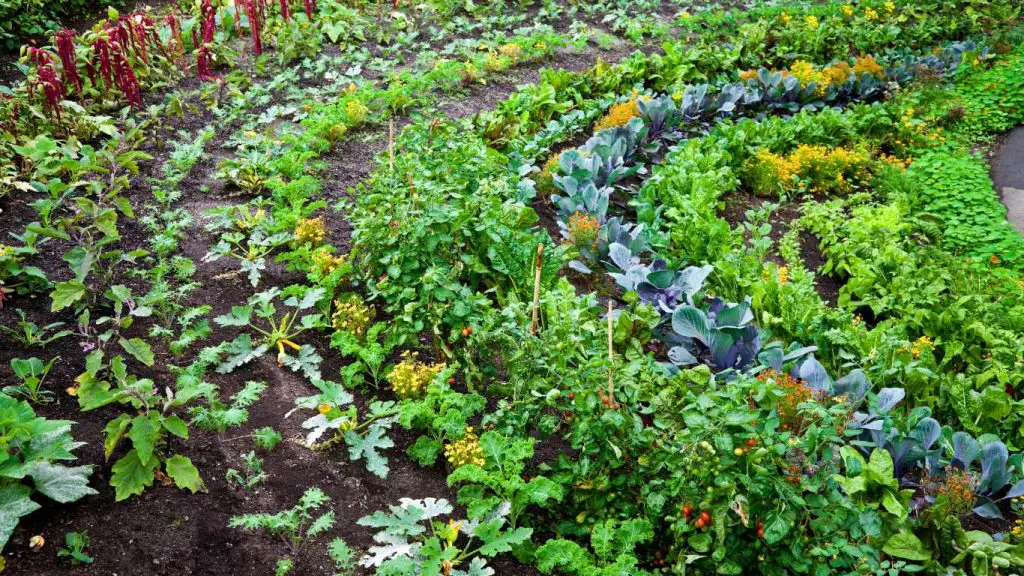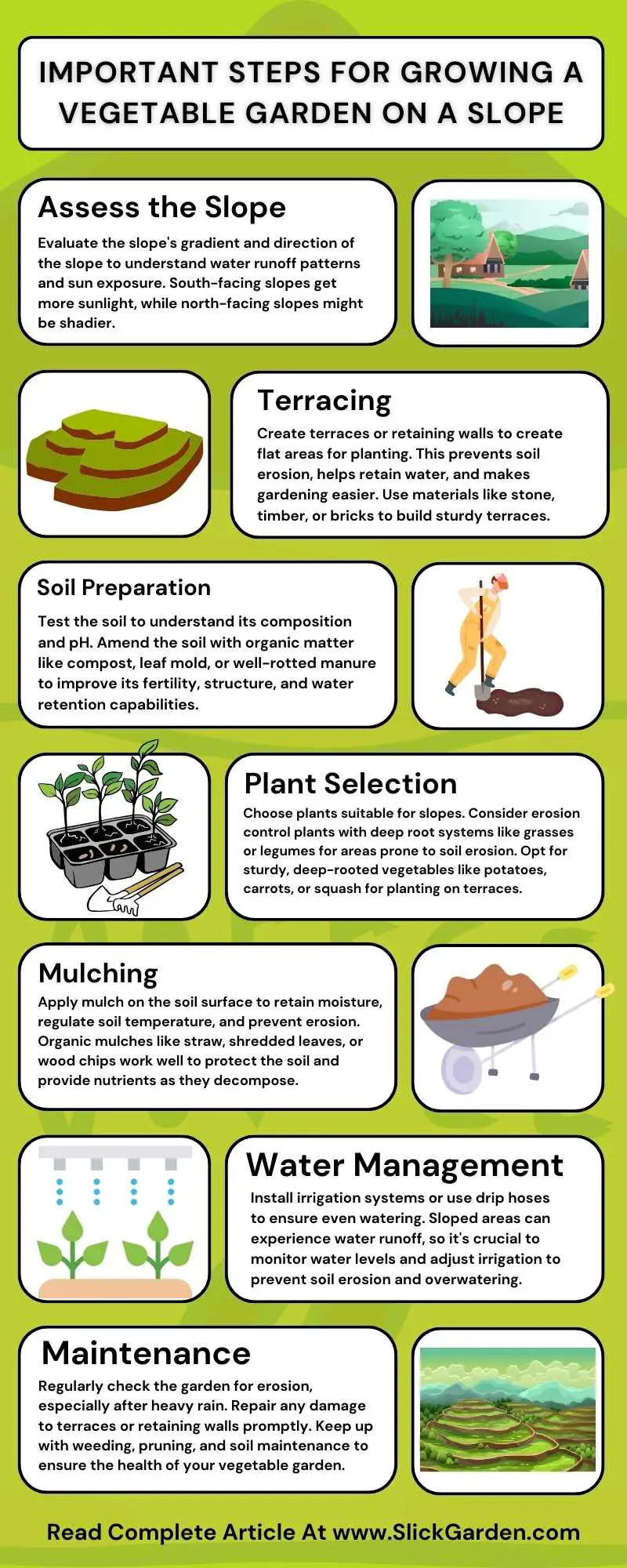Vegetable gardening on the hillside is not an easy task. You have to face a lot of challenges as the hillside vegetable garden needs extra care. You have to maintain drainage levels and soil composition to grow healthy vegetable plants.

It is not easy to grow vegetables on a slope because of the unevenness of the land. The soil will dry out very quickly when the land is inclined. When moisture drains away fast there is a danger of soil erosion.
As a result, the dry soil is unable to distribute nutrients poorly among the vegetable plants. The application of vegetable-friendly amendments and the construction of terraces on a sloped area will improve the water-holding capacity and quality of the soil of your vegetable garden.
What Vegetables You Can Grow Well On A Slope?
When you are planting vegetables on the slope you must be careful when you are selecting veggies for a hillside garden. Here are some best options for you.
- Carrots
- Potatoes
- Peppers
- Radishes
- Beads
- Okra
- Tomatoes
- Cucumber
- Peas
Some other vegetables that you can easily grow on a slope are

GREEN LEAFY VEGETABLES
The best option for growing a vegetable garden on a slope is green leafy vegetables such as lettuce, spinach, kale, mustard greens, arugula, and chard. Leafy vegetables like cold and steady moisture. The north slope is the best location for growing green leafy vegetables because the north-facing slope is a cooler and shadier place.
CORN AND DRY BEANS
The south-facing slope is the best location for growing corn and dry beans. The south-facing slope will warm first because it absorbs the most sunlight.
Your growing season will be longer if you grow in a sunny spot. The interesting thing about these two crops is that they need low maintenance as compaction of the soil will not bother them.
It is suggested that you plant corn and beans in a North-South pattern on the slope.
SQUASH AND CABBAGE
Squash prefer well-drained soil because their fruit will not rot on the ground. Warm soil is another condition for growing them. They also need extra space to sprawl.
You can grow cabbage at the base of the slope. The roots of the cabbage assist in holding back erosion of the soil on the slope.
Important Steps For Growing A Vegetable Garden On A Slope

If you don’t have any other option and you have a vegetable garden in a sloppy area. Before starting a vegetable garden on such land you must consider certain factors.
Following are some simple and easy steps if you follow them then you will be successful in making a garden on a slope.
1- ANALYSE THE SITE OF THE SLOPE WHERE YOU WANT TO START VEGETABLE GARDEN
This is a crucial step when you are going to start a vegetable garden on a slope. Inspect the site carefully and consider factors such as shade, sunlight, drainage, wind conditions, quality of the soil, and erosion. For slope, the measure of steepness plays a key role in establishing a successful vegetable garden. The steepness of the slope will decide whether it is difficult or easy for you to grow plants.
In case, the slope is above 40% then it is very hard for you to run a lawn mower or perform other functions such as weeding, mulching, watering, trimming, and harvesting. In such a situation when the slope is too high then it is better to grow a vegetable garden somewhere else.
After analyzing all these factors you should work on using non-plant landscaping to make a perfect garden. You can use fences. benches, driveways, sculptures, rock walls, and other things.
2- IMPORTANT FACTORS YOU SHOULD CONSIDER
After analyzing the slope, the next step is considering the important factors that play a very important role in the growth of your favorite vegetables.
Light
Plants need at least 6 to 8 hours of sunlight daily. Make sure you are growing a vegetable garden where plants receive enough sunlight. Moderation is very important.
Too much or too low light will not be good for your plants. If it is not easy for you to adjust so your plants can receive appropriate sunlight then you must move to another site.
DAMPNESS
It is not easy to maintain the moisture of the soil when you have a vegetable garden on a slope. The water runs off very quickly and evaporation makes it difficult for you to grow plants because of soil erosion.
If you want to be successful in gardening on a slope then you can install an irrigation system that will help you. A consistent supply of water makes it possible for your vegetable plants to receive enough water.
SOIL TEST
A soil test is also an important step as it will tell you what type of soil you have. This test will tell you about the new nutrients present in the soil. According to the result, you can amend the soil to make it more rich and fertile.
pH LEVEL
A soil test kit also tells you about the pH of the soil. The pH level of the soil tells you about acidity or alkalinity. If the soil is acidic, you can add organic material that can lower the acidic level.
You will see poor plant growth when the soil is strongly acidic. In case the pH level is greater than 9 then the soil is alkaline as it has a high level of sodium.
The ideal pH for the healthier growth of plants is between 5.1 and 7.5. It is better to check the pH level of the soil regularly to improve nutrient deficiencies.
3- CLEAR THE LAND
Whenever you decide to make a garden on the ground the first thing you have to do is clear the ground. Remove the debris such as mud rocks and branches you found on the land.
As you are going to make a vegetable garden on a slop it can be challenging for you to use machinery. It is better to start your task with digging.
You can use materials such as black plastic or landscaping fabric for better results. This will help to suffocate the existing plants on the ground.
It is not easy for you to use heavy equipment on such land but turning the soil is a good option by using a tractor or rototiller. Chemicals contaminate the soil that’s why you must avoid them.
Keep Reading:
- The Best Plants For Vegetable Garden; Must Grow Plants
- 8 Fast Growing Vegetables That You Can Grow In A Hurry
- How To Start Raised Bed Vegetable Gardening For Beginners?
4- DON’T FORGET ABOUT WEEDS
Weeds are unwanted plants as they steal nutrients from the soil. As a result, there is a combat between plants and weeds for food. If you don’t want this competition then you should eliminate them before starting a vegetable garden on a slop.
Weeds can destroy your plants as they soak up all the nutrients from the soil and there is only one option left for your plans to die. Weeds cause dehydration and compaction in the soil as they soak up water. They also share sunlight and space with other plants.
5- CONSIDER SOIL TYPE
As you know soil is the growing medium of your plants so you should take it very seriously. Different types of soil behave differently. You should carefully examine the specific type of soil you have in your vegetable garden.
You have to adopt different ways to improve the fertility of the soil according to its type. If you want to prevent your plants from struggling to grow then you have to maintain the richness of soil.
Slop has always dry soil because water runs down very quickly. If you have south-facing slopes then it will be challenging for you because intense sunlight is very dangerous for plants.
Your plants will not get enough moisture because water runs off very fast. The uneven distribution of water and nutrients makes the life of plants difficult.
6- POSITION VEGETABLE PLANTS THE RIGHT WAY
You should make a plan for the position of vegetable plants on a slope. The highest point of the slope is perfect for growing tall plants. It will not only create a striking visual appearance for your vegetable garden but there will be less competition between the plants.
The middle of the slope is the perfect location for growing bushy plants that have normal height. The smaller plants should be grown at the base of the slope. The taller plants at the back of the garden shelter shorter plants. The plants that like more moisture must be grown at the bottom of the slope because this area has more water.
7- SOW THE SEEDS
After doing all the above steps you have to sow the seeds. Oxygen, water, and heat are the important factors that seeds need for the germination process. You should be careful about providing these three things so the seeds will germinate properly.
A slope is different from the flat grounds. It is better to prepare the seedlings in trays. Make sure these trays have drainage holes and fill them with high-quality potting mix.
This will increase the chances of your success. high-quality potting mix contains all the nutrients that are needed for the young seedlings. Avoid using garden soil because it may contain pests that are not good for your plants.
Keep the soil moist by using a spray bottle. You should avoid boring water directly from the cans or bottles. When you spray water from the sphere it will water evenly to the seedlings.
To maintain the moisture level in the soil you can cover the trays with a sheet. This will encourage the germination process when you keep the seeds in the dark.
The ideal temperature for growing seed is 64 degrees Fahrenheit or 8 degrees centigrade. In winter you should place these trays where they get a warm environment.
After a few days, the seeds will germinate, keep the trays under the light, and maintain the moisture level of the soil. When tiny leaves start sprouting then you can transplant these young seedlings to the permanent location of the vegetable garden on a slope.
8- DEAL WITH THE SOIL EROSION PROBLEM
A vegetable garden on a slope will face the problem of soil erosion. If you follow some effective techniques then it can be helpful to fight this issue.
Make it possible that the water will go deep into the soil to prevent your soil from erosion. The roots of the plants will get enough water that will help to support them.
A drip irrigation system helps to maintain moisture in the soil. In case you don’t have a drip irrigation system then you can water deeply so the roots of the plants soak in water.
Heavy rain is also not good for the soil as it can wash everything away. Another easy way of protecting soil from erosion is using rotted manure, mulch, and compost.
Apply 3 to 4 inches of the above-mentioned things to prevent soil from erosion. You can also use natural fertilizer to keep the soil healthy and fit for plants.
